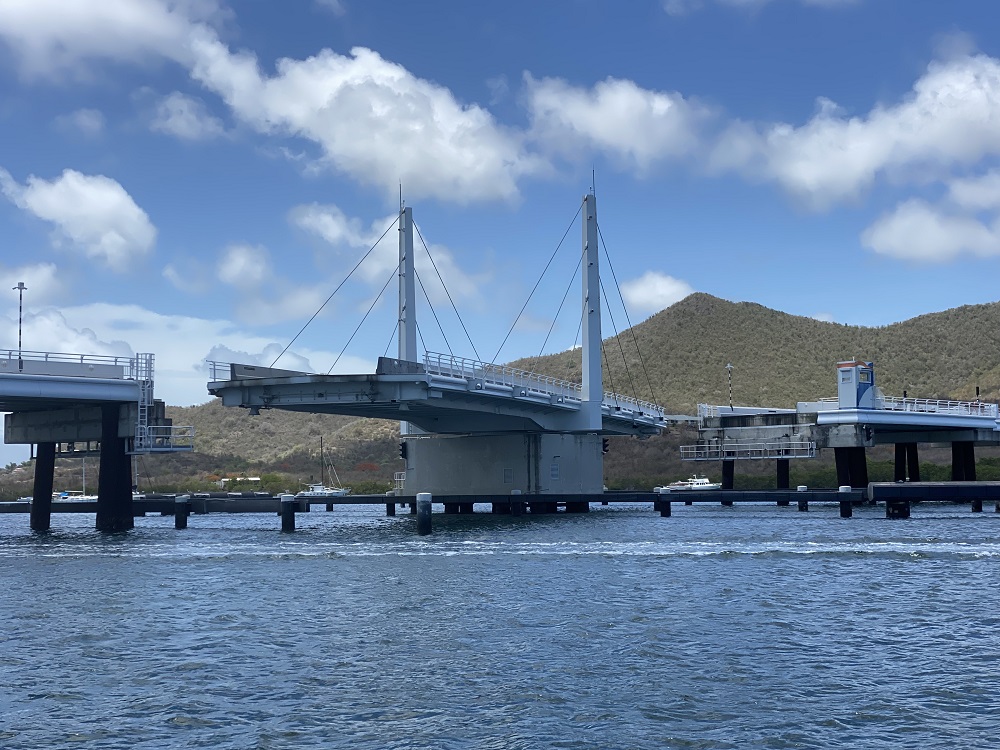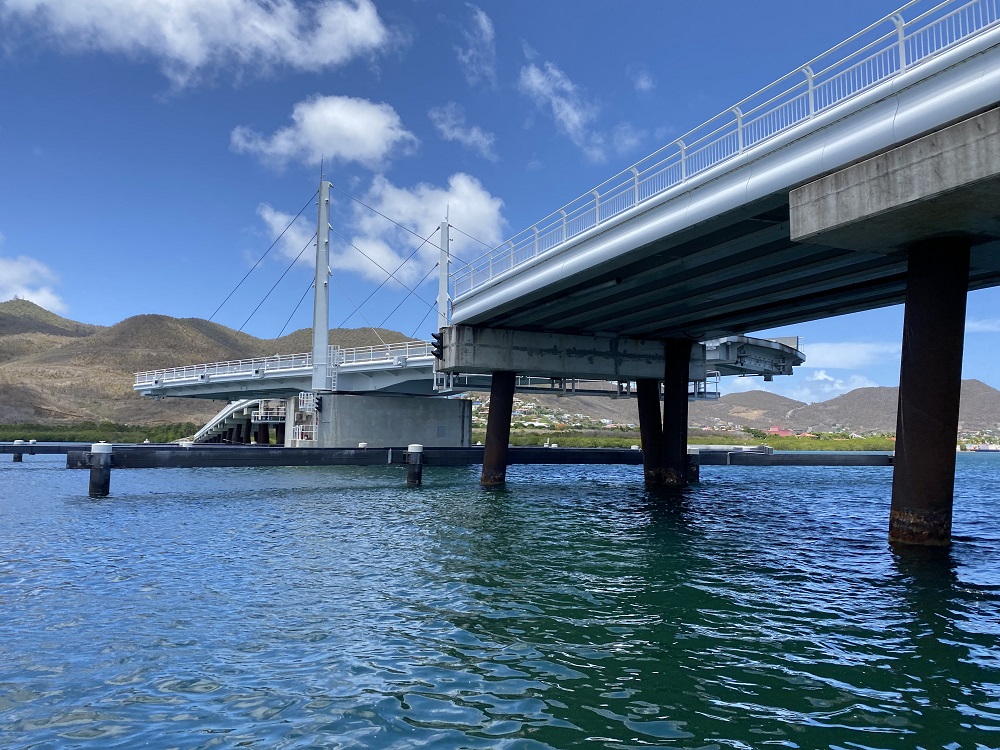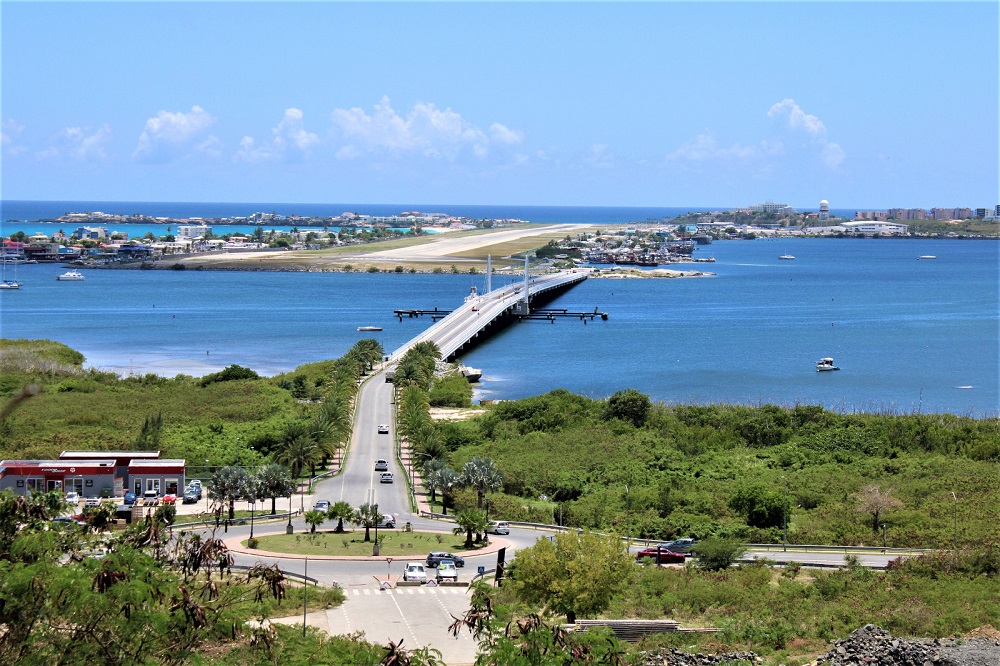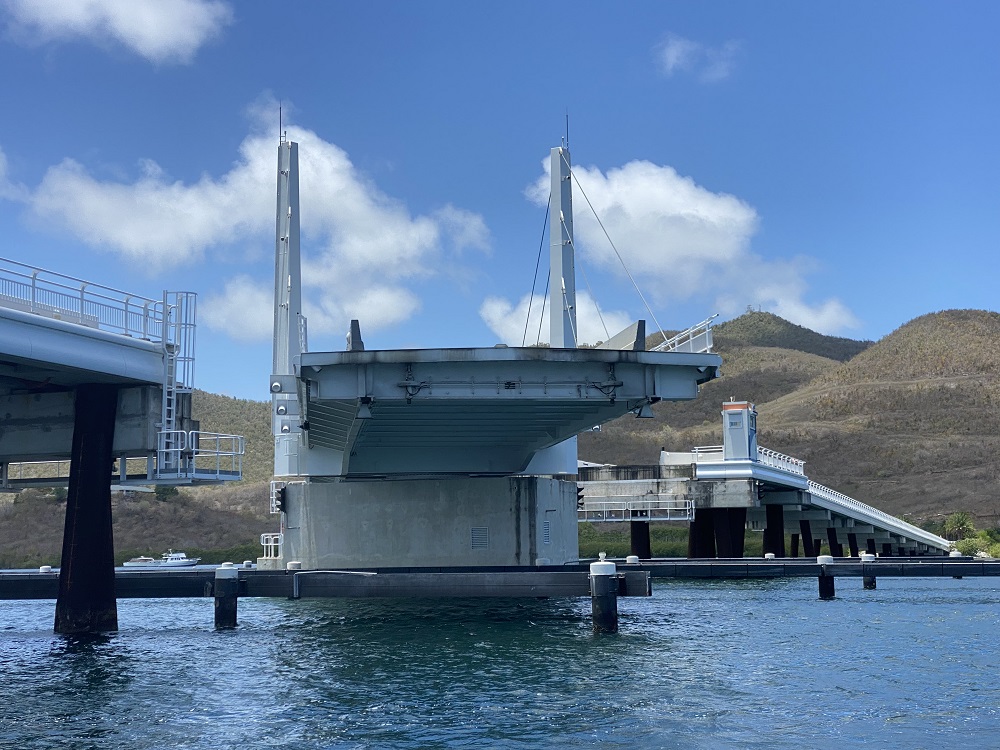Causeway bridge again in trouble

PHILIPSBURG — The causeway bridge over the Simpson Bay Lagoon has a checkered history that includes stories about bribery and technical malfunctioning. Currently, the swing bridge is out of commission again, making it impossible for cars to use the connection between Union Road and the Airport Road.
It is the second time since the bridge opened in December 2013 that the swing bridge malfunctions. In October 2017, after the passing of the devastating Hurricane Irma on September 6, the Simpson Bay Lagoon Authority Corporation (SLAC) announced that the bridge would be closed for “emergency repairs.” Engineers from the Dutch company Hollandia, that constructed the swing bridge, came to the island for an operational assessment.
Now the bridge is malfunctioning again. One Facebook-user (Russel Voges) expressed his thoughts about the situation as follows: “State of the art bridge. As usual, no upkeep, no maintenance. Sad state of stuck bridge. Again, no one is held accountable. So it will soon repeat itself again. As happens at all the government owned public companies.”
Whatever the current problem is, it must be complicated. The SLAC stated in a press release that technicians from NV GEBE, Elected and Port St. Maarten were working around the clock to solve it, remotely supported by specialists from Hollandia in the Netherlands.
For a piece of infrastructure with a price tag between $40 and $50 million, the bridge has given St. Maarten a lot of headaches.
Construction began in 2012 and in December 2013 the bridge was opened for traffic. Before construction could begin, there was of course a public tender, one that attracted the attention of the Public Prosecutor’s Office.
Five years after the first cars rolled from one side of the lagoon to the other, the Prosecutor’s Office asked the Common Court of Justice permission for a civil inquiry into the management of the port companies and with it, a peekaboo at the tender for the Causeway bridge.
In their petition to the court prosecutor noted that there had been five bidders for the bridge project. Volker Construction International had the highest bid: $39.445 million and it initially ended behind the other bidders. When the St. Maarten Harbor Holding Company presented the project in an effort to secure a bond issue, the price had suddenly gone up to $43.5 million.
Related story: How the causeway suddenly became ten percent more expensive
While Volker Stevin was behind the other bids, the evaluation of the tender turned things upside down. Suddenly, the highest bid from Volker Stevin received the highest marks and it was considered to have the best design.
“There is no explanation as to why the winning bid became ten percent more expensive after it had been selected,” the Prosecutor’s Office stated in its petition to the Common Court of Justice.
Nevertheless, the project went ahead. The Harbor Holding secured a $150 million bond and used $100 million of it to refinance existing loans. The remaining $50 million were reserved for the causeway bridge project.
Prosecutor’s questioned the wisdom of these actions, saying that they would increase the interest burden for the port. “This way the SMHHC took on a heavy and risky burden for the future,” the petition stated.
The port had of course a solution for covering its higher costs: an increase of container fees and fees on the supply of fuel. “This makes St. Maarten more expensive and a less attractive vacation destination,” prosecutors observed in their petition.
Already the harbor’s equity had evaporated after suffering losses in 2015 and 2016. Prosecutor’s questioned whether the port would be able to keep up with the maintenance-costs for the bridge.

By now the proof is in the pudding. The SLAC, the port-related entity that is responsible for the bridge, has in the past relied on “emergency repairs” and it is now facing a new bridge-crisis that can possibly be attributed to a sloppy or non-existent maintenance schedule.
As if all this is not bad enough, it later appeared that the bridge project had become unnecessarily more expensive because of the interactions between the construction company, a consultant and politician Theo Heyliger.
In 2020 it appeared from the Larimar-investigation that Heyliger had taken bribes from consultant Ronald Maasdam in exchange for a dredging contract (Devcon) and the contract for the bridge-construction. Maasdam became a crown witness for the prosecution and his testimony basically nailed Heyliger to the wall.
“Theo Heyliger is good for the island, but even better for himself,” the prosecution observed. They demanded 6.5 years of imprisonment against the founder of the UP-party and seizure of illegally obtained assets. In May 2020, the court sentenced Heyliger to 5 years of imprisonment. The case is still on appeal.
The question that still baffles a lot of people is why St. Maarten needed the causeway bridge in the first place. There is no known traffic study suggesting that it would do or has done anything to alleviate the pressure on the road through Simpson Bay.

The opening of the bridge in December 2013 was a grand affair and, we’ll admit it, the bridge looked good at the time with its colorful lights and its distinctive design. But when some of these lights went dark not too long after, replacing them was apparently too much to ask. Currently the bridge is a popular spot for joggers, at least, it was when the swing bridge was still functioning.

The swing bridge is 220 feet (67 meters) long and it weighs 450 tons. The total length of the bridge is 2,493 feet (760 meters).
###
Related articles:
How the causeway suddenly became ten percent more expensive
FIOD investigates tender process Causeway bridge
Simpson Bay Causeway to be Temporarily Closed for Motorized Traffic due to Emergency Repairs
Causeway Swing Bridge Repaired and Operational






















